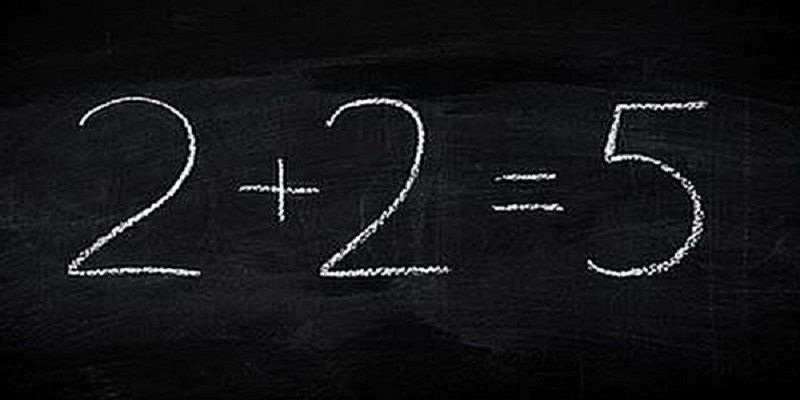5 Amazing Maths Tricks To Save Your Time
Evergreen Maths tricks are like an Oxygen Cylinder which helps to pass those 3 hours of an exam when you are not sure about a particular answer. Competitive exams maths tricks that help to save time in multiplication, division, addition, and subtraction could be very useful to you. Some of these tricks are:
Math Trick # 1
Multiplying by doubling and halving
There are cases when you’re multiplying two numbers together and one of the numbers is even. In this case, you can divide that number by two and multiply the other number by 2. You can keep doing this until you get numbers that are easy to work within your head.
Let’s say you want to multiply 14 by 16. You can double and halve the numbers till you get your answer:
- 14×16 = 28×8 = 56×4 = 112×2 = 224
- Another example: 12×15 = 6×30 = 6×3×10 = 180
- Here’s another example:
- 48×17 = 24×34 = 12×68 = 6×136 = 3×272… this may seem large, but you can break it down further into:
- 3×270 + 3×2 = 810 + 6 = 816
Math Trick # 2
Working with Percentages
Remember that “per cent” is like saying “parts of one hundred”.
So, it follows that 8 percent of 100, is 8. As another example, 23.89% is the same as saying “23.89 parts of 100”.
- Find 8% of 200.
- 8% of the first hundred is 8. 8% of the second hundred is also 8. So it follows that 8% of 200 is 8 + 8 = 16. Therefore 8% of 200 is 16%.
- Another bonus trick: you can flip percent. For example, 35% of 8 is the same as 8% of 35.
- Using percent has a very practical application when you’re at a restaurant. Let’s say you want to leave a tip of 15% for a $50 dinner. You can calculate it in your head:
- 15% of $100 is $15, so then 15% of 50 is half of that, or $7.50.
- Let’s try one more example: Calculate a 15% tip on a $60 dinner.
- Using the same approach, 15% of $100 is $15, so then 15% of 50 is half of that, or $7.50. Also, you know that 15% of $10 is $1.50.
- So then 15% of 60 is the same as 15% of 50 + 15% of 10… which equals $7.50 + $1.50, or $9.00.
Math Trick # 3
Quick Addition using the left-to-right approach (instead of the familiar right-to-left):
Instead of using a right to left approach, we can start from the left and move to the right. Take the following example:
45
+ 34
Usually, you would first sum up 4 to 45, and then add 30 to the result. But by using the left to right approach, you first sum up 30 to 45, and then you add 4 to the result. Although this example is very simple, you’ll see the advantages of this method as you start to use it.
If you’re working with three-digit numbers, the process is the same.
459
+ 637
This example is a bit more complicated than the previous one, yet it’s very easy to solve using the left to right approach. You first start by adding 600 to 459, which results in 1059. Now the problem is simplified to 1059 + 37. You simplify it even further by adding 30 to 1059, and then adding 7 to the result… which is 1096.
Math Trick # 4
Subtracting a large number from 1000.
To subtract a large number from 1000 you can use this basic rule: subtract all but the last number from 9 (taking the absolute value… that is, ignoring if the number is negative), then subtract the last number from 10:
1000
– 736
Step 1: subtract 7 from 9 = 2
Step 2: subtract 3 from 9 = 6
Step 3: subtract 6 from 10 = 4
Your answer: 264
Math Trick # 5
Multiplication rules
Multiply by 5: Multiply by 10 and divide by 2
Multiply by 6: Multiplying by 3 and then 2 is easy
Multiply by 9: Multiply by 10 and subtract the original number
Multiply by 12: Multiply by 10 and add twice the original number
Multiply by 13: Multiply by 3 and add 10 times original number
Multiply by 14: Multiply by 7 and then multiply by 2
Multiply by 15: Multiply by 10 and add 5 times the original number
Multiply by 16: You can double four times or multiply by 8 and then by 2
Multiply by 17: Multiply by 7 and add 10 times original number
Multiply by 18: Multiply by 20 and subtract twice the original number
Multiply by 19: Multiply by 20 and subtract the original number
Multiply by 24: Multiply by 8 and then multiply by 3
Multiply by 27: Multiply by 30 and subtract 3 times the original number
Multiply by 45: Multiply by 50 and subtract 5 times the original number
Multiply by 90: Multiply by 9 and put a zero on the right
Multiply by 98: Multiply by 100 and subtract twice the original number
Multiply by 99: Multiply by 100 and subtract the original number
If you think that you have now increased your calculation speed, check our Maths Quiz depending on your class.
Trending:
| Free preparation material for Maths Olympiad |
| Quick Maths definitions that everyone should know |
| All the Maths tricks that you can not miss |
| NCERT Solutions for all the subjects |

 Fake A Mystical Lite..
Fake A Mystical Lite..
 Quick Mathematics Tr..
Quick Mathematics Tr..
 Amazing Tricks..
Amazing Tricks..
 5 Time Saving Maths ..
5 Time Saving Maths ..
 Perfectly Sort Coins..
Perfectly Sort Coins..
 Faster Percentage Ca..
Faster Percentage Ca..
 Quickly Calculate Th..
Quickly Calculate Th..
 Digital Roots: The U..
Digital Roots: The U..
















